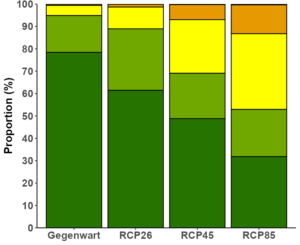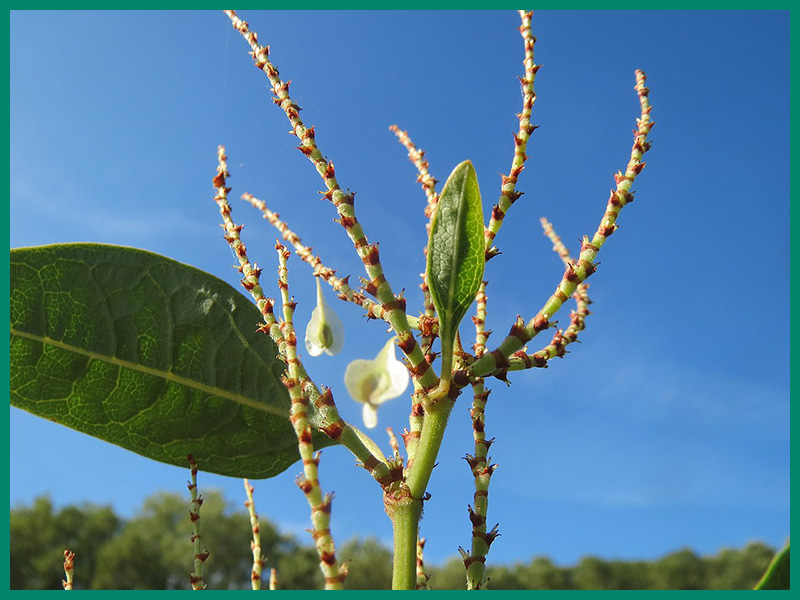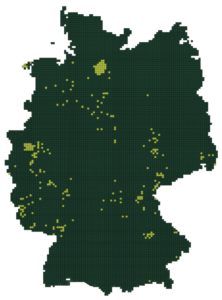Fallopia x bohemica
Bohemian knotweed
Fallopia bohemica is a hybrid plant species that resulted from a cross between the Sakhalin knotweed (Fallopia sachalinensis) and the Japanese knotweed (Fallopia japonica). This vigorous perennial can grow up to 4 meters tall. The leaves are pointed and heart-shaped and reach lengths of up to 15 cm. In autumn the plant produces small white raceme-shaped inflorescences. The hollow stems resemble those of bamboo. It forms triangular, shiny black nuts. Propagation takes place primarily vegetatively, through root shoots or rhizome pieces. The species can be identified by the hairs along the midvein on the underside of the leaves, which have a different shape and texture than the two parent species. It also has fewer branched inflorescences than Japanese knotweed. It tolerates a wide range of environmental conditions, including different soil types and lighting conditions.
Types of damage
Region of origin
Unknown

Introduction vectors
Current distribution
Based on the FlorKart Database of the Federal Agency for Nature Conservation, as of 2013
Miscellaneous
Dispersion forecast
Indicates the proportion of land suitable for habitat under current and future climate conditions (2060-2080) under three emission scenarios (RCP26, RCP45 & RCP85).

powered by Advanced iFrame. Get the Pro version on CodeCanyon.
Habitat suitability under current climate conditions
These habitat suitability maps show for Fallopia x bohemica where suitable habitat conditions exist.
The map on the left shows this for current climate conditions. Below this are maps for the time classes 2040-2060 and 2061-2080, in which three different emission scenarios can be selected.
The slider at the top left allows you to adjust the opacity of the map to make orientation easier.
By clicking on the respective quadrant, information on the environmental conditions present in it can be called up.
The methodology is explained here beschrieben.
powered by Advanced iFrame. Get the Pro version on CodeCanyon.
powered by Advanced iFrame. Get the Pro version on CodeCanyon.













